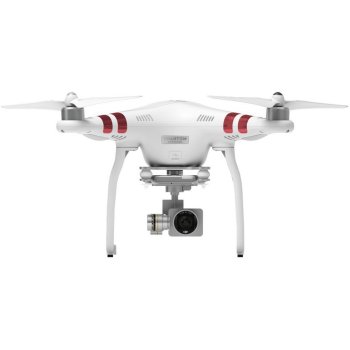- High precision mapping
- Excellent camera quality
- Long flight time
- Affordable
- User-friendly
- Good camera quality
- Expensive
- Requires specialized knowledge
- Limited range
- Basic features
DJI Phantom 4 RTK vs DJI Phantom 3 Standard
The world of phantom drones has evolved significantly over the years, with DJI being at the forefront of innovation. Two popular models that have garnered attention from professionals and enthusiasts alike are the DJI Phantom 4 RTK and the DJI Phantom 3 Standard. While both belong to the esteemed Phantom series, they cater to different needs and offer distinct features. In this comparison, we'll delve into the details of each model to help you decide which one suits your requirements.
Design and Build
The DJI Phantom 4 RTK boasts a sleek and sturdy design, with a magnesium alloy body that provides excellent strength-to-weight ratio. The drone's dimensions are 350 mm (L) x 350 mm (W) x 210 mm (H), and it weighs approximately 1391 grams. In contrast, the DJI Phantom 3 Standard has a slightly smaller and lighter design, measuring 350 mm (L) x 350 mm (W) x 160 mm (H) and weighing around 1216 grams.
Camera and Imaging
The camera is one of the most significant differences between these two phantom drones. The DJI Phantom 4 RTK comes equipped with a 1-inch, 20-megapixel CMOS sensor that captures stunning aerial images with exceptional detail. The camera also features a mechanical shutter, which reduces rolling shutter effect and ensures crisp photos even in high-speed flights. On the other hand, the DJI Phantom 3 Standard has a 12-megapixel camera with a 1/2.3-inch CMOS sensor, which still produces excellent images but may not match the quality of the Phantom 4 RTK's camera.
Flight Performance and Autonomy
Both drones offer impressive flight performance, but the DJI Phantom 4 RTK has a slight edge in terms of speed and agility. It can reach a maximum speed of 58 km/h (36 mph) and has a flight time of up to 30 minutes, thanks to its high-capacity battery. The DJI Phantom 3 Standard, on the other hand, has a top speed of 49 km/h (30 mph) and a flight time of around 25 minutes.
RTK Technology
One of the standout features of the DJI Phantom 4 RTK is its Real-Time Kinematic (RTK) technology. This allows for centimeter-level positioning accuracy, making it an ideal choice for applications that require precise mapping and surveying, such as construction, agriculture, and environmental monitoring. The Phantom 3 Standard does not have built-in RTK capabilities.
Controller and Transmission
The DJI Phantom 4 RTK comes with the DJI RC Plus remote controller, which features a built-in screen and supports OcuSync transmission technology for stable and reliable connections up to 7 km (4.3 miles) away. The DJI Phantom 3 Standard, on the other hand, uses the DJI Remote Controller, which has a more limited range of around 3.1 miles.
Price
The DJI Phantom 4 RTK is generally priced higher than the DJI Phantom 3 Standard, reflecting its advanced features and capabilities. The Phantom 4 RTK typically costs around $6,000-$7,000, while the Phantom 3 Standard can be found for around $500-$700.
Conclusion
In conclusion, the DJI Phantom 4 RTK and the DJI Phantom 3 Standard are both exceptional phantom drones that cater to different needs and budgets. If you require high-precision mapping and surveying capabilities, advanced camera features, and long-range transmission, the Phantom 4 RTK is the better choice. However, if you're looking for a more affordable option with still-excellent flight performance and imaging capabilities, the Phantom 3 Standard is an excellent value. Ultimately, the decision between these two models depends on your specific requirements and the type of applications you plan to use them for.































